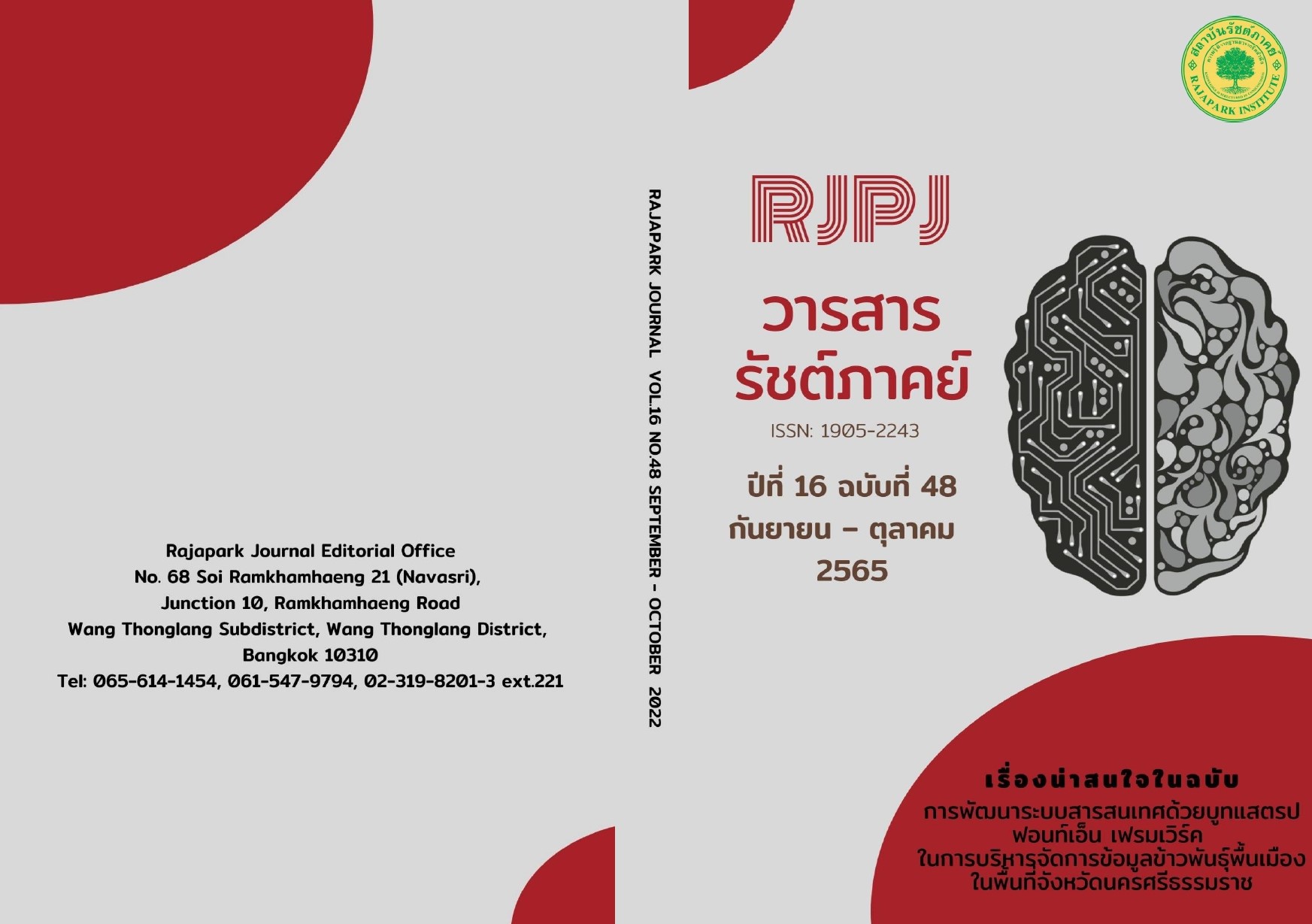Current States and Guidelines for Proactive Human Resource Management in the College of Nursing Under Prabomarajchanok Institute
Main Article Content
Abstract
The purposes of this research were to study the current states and guidelines for proactive human resource management in the College of Nursing under Prabomarajchanok Insitute. The mixed methods were used. The participants in quantitative research were 320 administrators and nursing instructors. The research instrument was questionnaires about current states of proactive human resource management. The data were analyzed using frequency, percentage, mean and standard deviation. Also, the qualitative method was collected by interviewing eight executives and experts in human resource management guiding by semi-structure interview form. Content analysis was used. The results showed that the current state of proactive human resource management had average score at a high level (= 3.76, SD=0.63). In details, the performance management have the highest score (
= 4.02, S.D = 0.67), followed by the using of information technology (
= 3.98, S.D = 0.71) and personnel retension (
= 3.84, S.D = 0.73), respectively. Guidelines for proactive human resource management consist of 5 parts including human resource management, development skills and competencies, human resource retention, using information technology and reinforcement the efficiency in human resource management.
Article Details

This work is licensed under a Creative Commons Attribution-NonCommercial-NoDerivatives 4.0 International License.
Views and opinions appearing in the Journal it is the responsibility of the author of the article, and does not constitute the view and responsibility of the editorial team.
References
Akaraborworn, C. (2014). Comparative Study of HR Trends in ASEAN 2014 – 2015. Human Resource and Organization Development Journal, 6(2), 1-33.
Danthamrongkul, W. (2016). HR 3.0 and the digital age workforce. Journal of HRintelligence, 8(1), 61-67. http://www.journalhri.com/pdf/0801_07.PDF
Gomez-Mejia, L., Balkin, D., & Cardy, R. (2016). Managing Human Resources (8th ed.). Pearson.
Jandeang, B., & Yupas, Y. (2017). Human Resource Management in New Public Management Paradigm. Journal of Research and Development Institute, Rajabhat Maha Sarakham University, 4(1), 29-44.
Klungvijit, W. (2015). Factors Affecting the Effectiveness of Competency Based Human Resources Management in Company Central Thailand. VRU Research and Development Journal Humanities and Social Science, 10(2), 195-202.
Mahidol University. (2015). Human Resources Management Strategic Plan Mahidol University 2016-2019. https://op.mahidol.ac.th/hr/wp-content/uploads/2018/07/MUHRstrategy59- 62.pdf
Malee, S. (2020). The Trend of Human Resource Management in the New Era Government. http://164.115.25.41/expertcenter/wpcontent/uploads/trm/Human%20Resource4.0%20for%20the%20Public%20Sector.pdf.
Manomaikul, P. (2018). Human Resource Management Strategies of Private Higher Education Institutions in the Next Two Decades[Doctoral Dissertation, Chulalongkorn University].
Meesapthong, C., Kongklai, C., & Kittisaknawin, C. (2016). Human Resource Management in the 21st Century. Business Review, 8(1), 183-197.
Meister, J. (2021). 10 HR Trends for the Next Normal of Work. https://www.forbes.com/sites/jeannemeister/2021/01/14/10-hr-trends-for-the-next-normal-of-work/?sh=36bd04545fc4
Office of the Civil Service Commission. (2018). Action Plan on Building and Developing Strategic Government Manpower for Digital Thailand 2018-2022. https://www.ocsc.go.th/sites/default/files/attachment/circular/attachment_0.pdf.
Office of the Civil Service Commission. (2021). Twenty-Year Strategies of the Office of the Civil Service Commission (2017-2036). https://www.ocsc.go.th/sites/default/files/attachment/page/01infographic_ocsc_20years-edit-180364.pdf
Patrawat, K. (2018). Skill Gaps and Implications for the Development of Thailand's Manpower. https://www.youtube.com/watch?v=1BbxUt6npVs
Phuvittaphan, A. (2017). Human Resource Management with Proactive Strategies. https://hrcenter.co.th/file/columns/hr_f_20170509_164300.pdf
Prabomarajchanok Institute. (2020). Human Resources Management Strategic Plan Prabomarajchanok Institute 2020-2024. Prabomarajchanok Institute, Ministry of Public Health.
PTT Exploration and Production Public Company. (2018). Sustainability Report 2018. https://www.pttep.com/th/Sustainabledevelopment/Disclosure/Sustainabilityreport/2018Sdreport.aspx
Srisa-ard, B. (2010). Preliminary Research. Suwiriyasarn.
Suttatana, N. (2017). Education in Thailand 4.0: Essential Learning Skills. In Academic Conference and Dissemination of Selected Research in National Education Sciences: Challenges in Management of Thai Education in the 4.0 Era, 2017.
Thammachoe, R. (2018). Innovative Human Resource Management of Thailand to Create Competitive Advantages in the ASEAN Community: A case study of Siam Cement Thailand Public Company Limited and Advanced Info Service Public Company Limited. Rajapark Journal, 12(26), 186-198.
Tharin, C. (2021). Good Governance for Human Resource Development to Samutsakhon Provincial Office of Labour Protection and Welfare. http://www3.ru.ac.th/mpaabstract/files/2562_1597734184_6114832070.pdf
Thongpan, S. (2016). Proactive HR in the changing era. Journal of Graduate Studies Valaya Alongkorn Ratjabhat University, 10(3), 245-258.
Ulrich, D. (2020). The Role of HR Business Partner in Digital Era. http://www.pmat.or.thA5/1712/HR%20Infographic/20712/content1/?contentid=38104
Wiriyapipat, N. (2016). The role of human resource management strategies improvement on the readiness for AEC. University of the Thai Chamber of Commerce Journal Humanities and Social sciences, 36(2), 222-236.
Wongprasit, N., & Saengsawang, W. (2016). The study of human resource management trends in Thailand for the future. http://dr-wichit.com/index_files/researchwichit/r9.pdf
Yamane, T. (1973). Statistic: An Introductory Analysis (3th ed.). Harper and Row.


